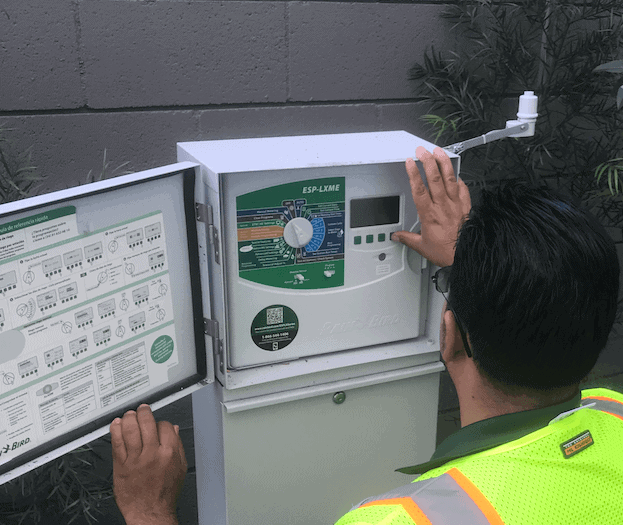Outdoor water use can account for 50 percent or more of the total water use for a home during the summer months. Having an automated irrigation system can help manage water consumption in the summer and all year long. When properly scheduled, adding a sprinkler timer can result in significant water savings and lower water bills. In this article, we talk about best practices for programming your timer.
Why worry about correct timer programming?
The goal is to irrigate only the amount of water required by the plants or lawn. You can save hundreds of gallons of water used on your landscape just by ensuring your timer is set properly to your plants’ watering needs. To take full advantage of this, you’ll need to change the watering schedules with the changing seasons; it’s not a one-time set up.
Recommended schedules by season
For spring and summer it’s recommended that lawns get watered three days a week for 8-10 minutes, depending on how hot the days become. Shrubs with pop-up sprinklers should be watered two times a week, but on a soak cycle (two times a day) for 3-4 minutes each cycle, dependent on the weather. If you have drip irrigation it should come on two times a week for 20-30 minutes.
For fall and winter the lawn should be watered two times a week for 8 minutes. Shrubs with pop-up sprinklers should be watered once a week again on a soak cycle for 2 minutes each cycle. Drip irrigation should water once a week for about 30 minutes. Keep in mind that later in the winter you may not even need to water your landscape, depending on how cold it gets.

How to program your controller
Although every timer is different, most of them have the roughly the same layout. This should work for many of them:
- Set the current time and day.
- Start with program A for your lawn areas.
- Select each station and enter the minutes you wish to water each valve.
- Select the time you’d like your irrigation to start. LADWP has various scheduling examples here.
- Select the days you want your irrigation to run.
- With program A complete, use the same steps for programs B and C. Planters, shrubs, drip irrigation would be in these programs and require less water.
Other things to keep in mind
Watering times depend greatly on the soil, slope, and type of plants. For example, California Native plants will require less water than other plants. Running an irrigation system on clay soil for more than six minutes can result in runoff. Make sure to take advantage of rainy days, if there is rain forecasted, turn off your irrigation. Don’t forget to turn it back on once it stops raining. Perfecting your watering schedule isn’t an easy task, but once it’s managed properly your landscape will look as good as it can year round!
If you need expert help programming your timer don’t hesitate to contact us.





